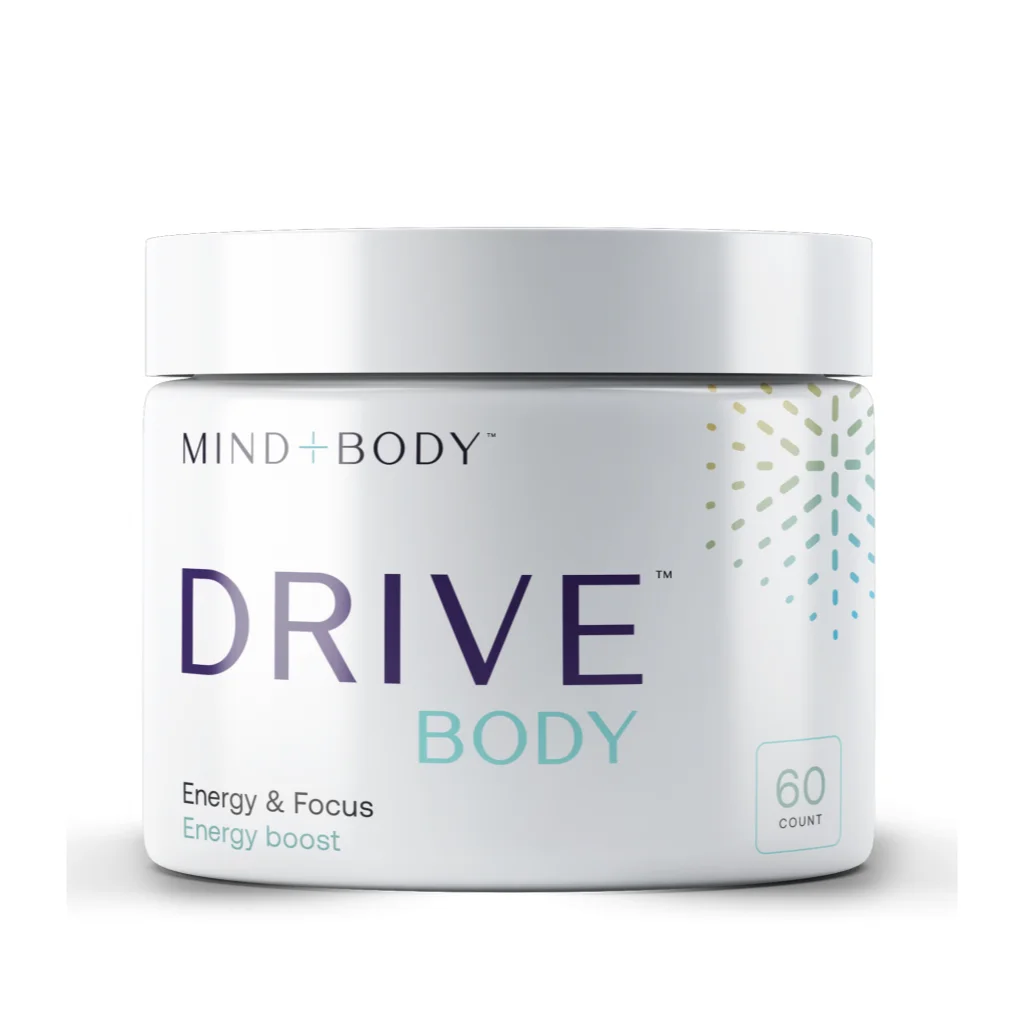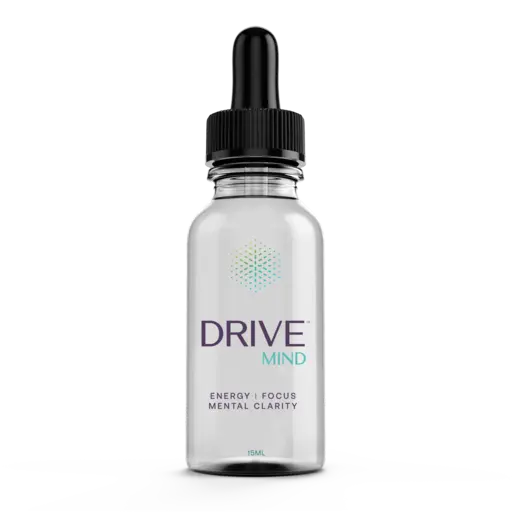A Growing Problem
Before we talk about our solution to the problem, let’s first understand the issue.
Is Stimulant Use an Epidemic?
Attention deficit disorder (ADD) and attention deficit hyperactivity disorder (ADHD) are common neurodevelopmental disorders affecting millions of people in America. To manage the symptoms of these conditions, medications such as stimulants and non-stimulants are frequently prescribed. While these medications have shown effectiveness in improving focus and reducing impulsivity, there are concerns regarding their long-term use.1
- Short-Term Benefits
Before discussing the potential perils, it is important to acknowledge the short-term benefits of ADD and ADHD medications. Stimulants like methylphenidate (Ritalin) and amphetamines (Adderall) can enhance concentration, increase attention span, and reduce hyperactivity. Non-stimulant medications such as atomoxetine (Strattera) can also be effective in managing symptoms. These medications provide relief for many individuals, enabling them to better function in various areas of life, including academics, work, and relationships. - Dependency and Addiction
One of the primary concerns associated with long-term use of ADD and ADHD medications is the potential for dependency and addiction. Stimulant medications, in particular, have a high abuse potential due to their similarities to illicit drugs like cocaine. Extended use can lead to tolerance, where higher doses are needed to achieve the same effect.2 Additionally, individuals may develop a psychological dependence, believing they cannot function without the medication. This can create a cycle of dependency and increase risk of addiction.2 - Cardiovascular and Neurological Risks
Another area of concern relates to the potential cardiovascular and neurological risks associated with long-term use of ADD and ADHD medications. Stimulant medications have been linked to increased heart rate, blood pressure, and irregular heart rhythms. In rare cases, these effects can lead to serious cardiovascular events, although the overall risk is relatively low.3 Long-term use of stimulants has also raised concerns about potential effects on brain development, although more research is needed to understand the extent of these risks.4 - Psychiatric and Emotional Effects
Some studies suggest a potential link between long-term use of ADD and ADHD medications and psychiatric and emotional effects. These medications can cause side effects such as mood swings, irritability, and anxiety. In some cases, they may exacerbate underlying mental health conditions or even trigger new ones.5 It is crucial for healthcare providers to closely monitor individuals on long-term medication to address any emerging psychiatric or emotional concerns. - Impact and Growth
For children and adolescents, the impact of long-term medication use on growth and development is a significant consideration. Stimulant medications have been associated with temporary growth suppression, and concerns have been raised about their potential effects on height, weight, and the development of other vital organs.6 While most individuals catch up on growth once medication is discontinued, regular monitoring of growth parameters is essential during treatment.
The Long-Term Effect of Prescribed Stimulants
Long-term use of ADD and ADHD medications can offer significant benefits for individuals struggling with these disorders. However, it is crucial to be aware of the potential perils associated with their prolonged use. Dependency, addiction, cardiovascular risks, neurological concerns, psychiatric effects, and impact on growth and development require careful consideration and monitoring.2-6 Collaborative efforts among healthcare providers, patients, and families are necessary to strike a balance between symptom management and minimizing potential long-term risks. Additionally, further research is needed to better understand the long-term effects of these medications and develop strategies to mitigate these associated risks effectively.
The Data Doesn’t Support the Promises
Energy drinks have gained substantial popularity in recent years, promising consumers increased alertness and energy. However, this research examines the potential health risks associated with these beverages, including their ingredients, adverse health effects, and the regulatory challenges surrounding them.
Energy drinks are beverages that typically contain caffeine, sugar, and various other ingredients like taurine, guarana, and B-vitamins.7 Marketed as a quick energy boost, they have raised concerns about their potential health consequences, including cardiovascular issues, mental health impacts, and broader public health concerns with long-term use.
Ingredients of Concern
- Caffeine
Energy drinks are known for their high caffeine content, often exceeding that of traditional sources like coffee or soda.8 A standard 16-ounce (473 ml) energy drink may contain up to 160 milligrams of caffeine or more. Excessive caffeine consumption is linked to a range of health problems, including increased heart rate, hypertension, anxiety, and sleep disturbances.9 It can also lead to caffeine addiction and significant symptoms of withdrawal. - Sugar
Most energy drinks contain excessive sugar, surpassing daily recommended limits in a single serving.10 Overconsumption of sugar is associated with obesity, type 2 diabetes, and dental issues. The combination of caffeine and sugar in these drinks can lead to rapid energy surges followed by crashes, leaving individuals feeling fatigued.11 - Additional Stimulants
Energy drinks often contain additional stimulants like taurine and guarana, which can interact with caffeine to intensify its effects.12 This synergy can result in excessive stimulation, causing palpitations, nervousness, and jitters. - B-Vitamins
While B-vitamins are essential for energy metabolism, energy drinks often contain them in excess of daily requirements.13 Overconsumption of certain B-vitamins can result in adverse health effects, including nerve damage and gastrointestinal disturbances.
Health Effects and Risks
- Cardiovascular Health
The high caffeine content in energy drinks poses a significant risk to cardiovascular health.14 Excessive caffeine intake can lead to palpitations, arrhythmias, and, in rare cases, heart attacks. Individuals with underlying heart conditions are particularly vulnerable. - Mental Health
Energy drinks have been associated with increased anxiety levels, nervousness, and sleep disturbances.15 The blend of caffeine and other stimulants can exacerbate these issues, negatively affecting mental well-being. - Dehydration
Caffeine acts as a diuretic, increasing urine production and potentially causing dehydration.16 This effect is amplified when combined with the high sugar content of many energy drinks, further depleting the body’s hydration levels. - Risky Behaviors
Research has shown a connection between energy drink consumption and risky behaviors, including excessive alcohol consumption and drug use.17 These behaviors can have severe consequences for personal safety and public health.
Regulatory Challenges
Addressing the hazards of energy drinks is complicated by inconsistent and lax regulation. Unlike pharmaceuticals, energy drinks are often categorized as dietary supplements, allowing them to bypass many safety regulations and labeling requirements.18 This regulatory gap makes it challenging for consumers to make informed choices about their consumption of energy drinks.
The Lasting Impact of Energy Drinks
Energy drinks, while promising a quick energy boost, present substantial health risks to those who consume them. Their high caffeine and sugar content, along with other stimulants, jeopardize cardiovascular and mental health. Regulatory gaps complicate matters, underscoring the need for action by individuals, healthcare practitioners, and policymakers to mitigate these risks and promote safer consumption practices. Raising public awareness, enforcing stricter regulations, and promoting informed decision-making can help curb the dangers associated with energy drinks and safeguard public health.
What is the solution to the problems
outlined in this article?
Well at Mind & Body Naturals, we believe that Mother Nature has all the answers. After two years of human trials, thousands of hours of Research and Development and a commitment to helping our customers alleviate their mental and physical suffering, our proprietary Calm Energy and Mental Focus blends can and will solve many of the problems outlined in this article. They are made of 100% all-natural, non-addictive, plant-based ingredients – all from ethically sourced farms. Let’s talk about those ingredient blends and how they work next.
Mother Nature’s Answer
The ingredients found in our proprietary Calm Energy and Mental Focus blends date back centuries and come from many different parts of the world. They are adaptogenic herbs, cannabidiol, and moderate doses of caffeine.

The herbs we use are all native to China and are used consistently in traditional eastern medicine.28 These three herbs, Siberian Ginseng, Schisandrae root, and Gynostemma, are all classified as adaptogens, which are compounds that influence and enhance the body’s ability to deal with stress and regulate the cardiovascular, nervous, and respiratory systems.28 Research on Siberian Ginseng shows that historically, this herb has been used to fight fatigue and combat lower back and knee pain. On top of this, researchers have also found that Siberian Ginseng reduces plasma cholesterol and triglyceride levels and increases blood flow to the brain and arteries.28-30 Research on Gynostemma also indicates a potential for benefits to an individual’s heart by showing an overall decrease of cholesterol and triglyceride levels following consumption. Historically, Gynostemma has also been shown to reduce fatigue, help with poor memory, and with decreasing inflammation in the body.28,31  While the other two adaptogens work in tandem to increase heart health, Schisandrae on the other hand has historically been used to help deal with anxiety by “tranquilizing the heart.” In addition to this, researchers have noted that Schisandrae helps to not only increase mental alertness and work efficiency, but it has also been shown to quicken individual’s reflexes.28,32,33
While the other two adaptogens work in tandem to increase heart health, Schisandrae on the other hand has historically been used to help deal with anxiety by “tranquilizing the heart.” In addition to this, researchers have noted that Schisandrae helps to not only increase mental alertness and work efficiency, but it has also been shown to quicken individual’s reflexes.28,32,33
 Another important ingredient in our all-natural proprietary blends is cannabidiol (CBD), isolated directly from the Cannabis sativa L. plant. While the plant and it’s uses date back more than 12,000 years ago in in Central Asia, it was only recently in around 1980 that research into cannabidiol had begun to uncover the many therapeutic benefits of this compound.24 Researchers have found that cannabidiol counteracts the sedative qualities of the other compounds found in the hemp plant, along with providing alerting properties itself.25 Along with showing itself to be a wake-inducing compound at the proper dosage, cannabidiol has been shown to help prevent drowsiness throughout the day, which researchers say may be therapeutic for those with sleep disorders.26,27
Another important ingredient in our all-natural proprietary blends is cannabidiol (CBD), isolated directly from the Cannabis sativa L. plant. While the plant and it’s uses date back more than 12,000 years ago in in Central Asia, it was only recently in around 1980 that research into cannabidiol had begun to uncover the many therapeutic benefits of this compound.24 Researchers have found that cannabidiol counteracts the sedative qualities of the other compounds found in the hemp plant, along with providing alerting properties itself.25 Along with showing itself to be a wake-inducing compound at the proper dosage, cannabidiol has been shown to help prevent drowsiness throughout the day, which researchers say may be therapeutic for those with sleep disorders.26,27
 We also use Caffeine (in moderate doses) in our Calm Energy and Mental Focus blends. Caffeine’s history began across the world in South America, Africa, and East Asia where it grows natively in the form of coffee seeds, cacao beans, Kola nuts, or tea leaves. While caffeine’s primary purpose has been to combat fatigue and give you that extra bit of energy you need throughout the day, research indicates that it may be useful for other aspects of day-to-day life.19 Studies show that moderate doses of caffeine may be beneficial in treating both migraines and post-dural puncture headaches, while also enhancing athletic performance in endurance sports.19,20 Recent research has also indicated it’s potential in helping with neurocognitive disorders like Alzheimer’s, while also showing potential to help in treating mental health disorders such as depression.21-23
We also use Caffeine (in moderate doses) in our Calm Energy and Mental Focus blends. Caffeine’s history began across the world in South America, Africa, and East Asia where it grows natively in the form of coffee seeds, cacao beans, Kola nuts, or tea leaves. While caffeine’s primary purpose has been to combat fatigue and give you that extra bit of energy you need throughout the day, research indicates that it may be useful for other aspects of day-to-day life.19 Studies show that moderate doses of caffeine may be beneficial in treating both migraines and post-dural puncture headaches, while also enhancing athletic performance in endurance sports.19,20 Recent research has also indicated it’s potential in helping with neurocognitive disorders like Alzheimer’s, while also showing potential to help in treating mental health disorders such as depression.21-23

Introducing Nature’s Answer to Energy, Memory & Mental Focus
Our proprietary Energy & Mental Focus blends are called, Drive Mind & Drive Body. And they are manufactured right here in the United States!
We’re Mind and Body Naturals, a revolutionary wellness company with a range of all-natural, plant-based products across four categories – Sleep Disorders, Anxiety & Depression, Energy & Mental Focus (treating ADD & ADHD), and Pain. Our Energy and Focus blends are only one example of the dozens of “Secret all-natural Ingredients” that we use to help our customers feel like themselves again.
But how we came to be – our “why” is very personal. Jon Black, our founder & CEO had 2 very close friends commit suicide.
 During that same period, members of his own family began to experience significant mental health challenges.
During that same period, members of his own family began to experience significant mental health challenges.
That’s when he sought out – and began working with, naturopathic doctors, research scientists, and chemists. Together, they began researching the globe for all-natural, non-addictive, plant-based ingredients that would help his loved ones.
Two years of research and human trials followed, and Mind & Body Naturals is the result. Now, our vision is to relieve the mental and physical suffering of millions of people, using all-natural, non-addictive, plant-based medicine.
Our Drive Body and Drive Mind products are both backed by over 2-years of pre-clinical human trials, over 150 scientifically published articles referenced, and thousands of positive reviews.

This non-addictive, plant-based solution is rooted in nature and backed by extensive research and studies. If you’re ready to get more accomplished, be happier, with more drive, energy and focus, Drive Body is for you! Drive Body contains 60 capsules with our proprietary “Energy and Mental Focus Formula.” These easily digestible vegetable capsules provide you with the quick, effective support you need to help you Be Yourself AgainTM.

Drive Mind is another one of our non-addictive, plant-based solutions rooted in nature and backed by extensive research and studies. This formula provides a unique propriety blend of cannabinoids, terpenes, and essential oils with ingredients backed by research aimed at providing quick, lasting mental focus and brain health.34-45
The effects of Drive Mind are much like that of Drive Body, but Drive Mind uses an oil dropper as the delivery method and can be used throughout the day – or as needed when fogginess begins to creep in. Place a few drops under the tongue and wait at least 60 seconds to properly absorb, then swallow. You’ll be surprised by the difference you feel in a matter of minutes.
So Why Two Products?
During our internal research and testing over a two-year period, we discovered that each user responds differently to our proprietary formulas. Some find more relief using Drive Mind throughout the day, and others prefer to take Drive Body first thing in the morning to start their day out right. But most of the people in the trials saw significant increases in the effectiveness of these products when they were both taken together.
How Soon Does It Work?
The calming, non-addictive, and non-drowsy effects of Drive Body are typically felt within 30-60 minutes and can last throughout the day. Drive Mind is meant to be taken as needed and can usually be felt within 10-15 minutes.
If You’re Looking To:
- Naturally Infused Calm Energy with No Crashing
- Improve Productivity with More Focus and Clarity
- Increase Concentration and Motivation
- Vastly Improved Memory
- 100% Natural Ingredients
- Fast-Acting, Long-Lasting Motivating Energy
Then we welcome you to try our products risk-free here! Enjoy a 60-day money-back guarantee and as part of our limited-time introductory promotion each of our products is just $9.99!
References
- Chang Z, Ghirardi L, Quinn PD, Asherson P, D’Onofrio BM, Larsson H. Risks and Benefits of Attention-Deficit/Hyperactivity Disorder Medication on Behavioral and Neuropsychiatric Outcomes: A Qualitative Review of Pharmacoepidemiology Studies Using Linked Prescription Databases. Biol Psychiatry. 2019 Sep 1;86(5):335-343. PMID: 31155139; PMCID: PMC6697582.
- McCabe, S. E., et al. (2016). Non-medical use of prescription stimulants among US college students: Prevalence and correlates from a national survey. Addiction, 111(4), 657-665.
- Wilens, T. E., et al. (2003). Cardiovascular effects of therapeutic doses of tricyclic antidepressants and selective serotonin reuptake inhibitors. The Journal of Clinical Psychiatry, 64(Suppl 3), 13-16.
- Molina, B. S., et al. (2009). The MTA at 8 years: Prospective follow-up of children treated for combined-type ADHD in a multisite study. Journal of the American Academy of Child & Adolescent Psychiatry, 48(5), 484-500.
- Vitiello, B. (2008). Long-term effects of stimulant medications on the brain: Possible relevance to the treatment of attention deficit hyperactivity disorder. Journal of Child and Adolescent Psychopharmacology, 18(6), 557-563.
- Poulton, A., et al. (2013). Growth and pubertal outcomes of childhood ADHD: A longitudinal study of males. Psychological Medicine, 43(3), 545-557.
- Nawrot, P., Jordan, S., Eastwood, J., Rotstein, J., Hugenholtz, A., & Feeley, M. (2003). Effects of caffeine on human health. Food Additives & Contaminants, 20(1), 1-30.
- Reissig, C. J., Strain, E. C., & Griffiths, R. R. (2009). Caffeinated energy drinks—A growing problem. Drug and Alcohol Dependence, 99(1-3), 1-10.
- Temple, J. L. (2009). Caffeine use in children: what we know, what we have left to learn, and why we should worry. Neuroscience & Biobehavioral Reviews, 33(6), 793-806.
- Malik, V. S., Popkin, B. M., Bray, G. A., Després, J. P., & Hu, F. B. (2010). Sugar-sweetened beverages, obesity, type 2 diabetes mellitus, and cardiovascular disease risk. Circulation, 121(11), 1356-1364.
- Seifert, S. M., Schaechter, J. L., Hershorin, E. R., & Lipshultz, S. E. (2011). Health effects of energy drinks on children, adolescents, and young adults. Pediatrics, 127(3), 511-528.
- Higgins, J. P., Tuttle, T. D., & Higgins, C. L. (2010). Energy beverages: content and safety. Mayo Clinic Proceedings, 85(11), 1033-1041.
- Reissig, C. J., Strain, E. C., & Griffiths, R. R. (2009). Caffeinated energy drinks—A growing problem. Drug and Alcohol Dependence, 99(1-3), 1-10.
- Higgins, J. P., Tuttle, T. D., & Higgins, C. L. (2010). Energy beverages: content and safety. Mayo Clinic Proceedings, 85(11), 1033-1041.
- Alsunni, A. A., & Badar, A. (2015). Energy drinks consumption pattern, perceived benefits and associated adverse effects amongst students of University of Dammam, Saudi Arabia. Journal of Ayub Medical College Abbottabad, 27(1), 199-203.
- Shannon, M. (2010). Caffeine and sympathomimetic amine toxicity. Pediatric Clinics of North America, 57(3), 761-774.
- Arria, A. M., Caldeira, K. M., Kasperski, S. J., Vincent, K. B., Griffiths, R. R., & O’Grady, K. E. (2010). Energy drink consumption and increased risk for alcohol dependence. Alcoholism: Clinical and Experimental Research, 34(2), 248-255.
- Azagba, S., Langille, D., & Asbridge, M. (2014). An emerging adolescent health risk: Caffeinated energy drink consumption patterns among high school students. Preventive Medicine, 62, 54-59.
- Evans J, Richards JR, Battisti AS. Caffeine. [Updated 2023 Jun 8]. In: StatPearls [Internet]. Treasure Island (FL): StatPearls Publishing; 2023 Jan-. Available from: https://www.ncbi.nlm.nih.gov/books/NBK519490/
- Pesta DH, Angadi SS, Burtscher M, Roberts CK. The effects of caffeine, nicotine, ethanol, and tetrahydrocannabinol on exercise performance. Nutr Metab (Lond). 2013 Dec 13;10(1):71
- Cunha RA, Agostinho PM. Chronic caffeine consumption prevents memory disturbance in different animal models of memory decline. J Alzheimers Dis. 2010;20 Suppl 1:S95-116.
- Arendash GW, Schleif W, Rezai-Zadeh K, Jackson EK, Zacharia LC, Cracchiolo JR, Shippy D, Tan J. Caffeine protects Alzheimer’s mice against cognitive impairment and reduces brain beta-amyloid production. Neuroscience. 2006 Nov 03;142(4):941-52.
- Santos C, Costa J, Santos J, Vaz-Carneiro A, Lunet N. Caffeine intake and dementia: systematic review and meta-analysis. J Alzheimers Dis. 2010;20 Suppl 1:S187-204.
- Crocq MA. History of cannabis and the endocannabinoid system . Dialogues Clin Neurosci. 2020 Sep;22(3):223-228. PMID: 33162765; PMCID: PMC7605027.
- Nicholson, A. N.; Turner, C.; Stone, B. M.; Robson, P. J. Effect of Delta-9-tetrahydrocannabinol and cannabidiol on nocturnal sleep and early-morning behavior in young adults. J. Clin. Psychopharmacol., 2004, v24 (3), 305-13.
- Murillo-Rodriguez, E.; Millan-Aldaco, D.; Palomero-Rivero, M.; Mechoulam, R.; Drucker-Colin, R. Cannabidiol, a constituent of Cannabis sativa, modulates sleep in rats. FEBS lett., 2006, 580 (18), 4337-45.
- Murillo-Rodriguez, E.; Millan-Aldaco, D.; Palomero-Rivero, M.; Mechoulam, R.; Drucker-Colin, R. The nonpsychoactive Cannabis constituent cannabidiol is a wake-inducing agent. Behav. Neurosci., 2008, 122 (6), 1378-82.
- Chen, J. K., & Chen, T. T. (2004). Chinese Medical Herbology and Pharmacology. Art of Medicine Press, Inc.
- Zhong Yi Yao Xin Xi (Information on Chinese Medicine and Herbology), 1987; 4:36
- CA, 1968; 69:104731
- Zhong Yao Xue (Chinese Herbology), 1998; 878:881
- Hu Nan Yi Xue (Hunan Medicine), 1991; 8(5):259
- Hu Na Yi Yao Za Zhi (Hunan Journal of Medicine and Herbology), 1991; 7(2):56
- Rapin, Lucile et al. “Cannabidiol use and effectiveness: real-world evidence from a Canadian medical cannabis clinic.” Journal of cannabis research vol. 3,1 19. 23 Jun. 2021, doi:10.1186/s42238-021-00078-w
- Schröder, N., da Silva, V. K., Hallak, J. E. C., Zuardi, A. W., & de Souza Crippa, J. A. (2017). Chapter 83 – Cannabidiol and Neuroprotection: Evidence from Preclinical Studies. In V. R. Preedy (Ed.), Handbook of Cannabis and Related Pathologies (pp. 802–812). Academic Press.
- Batalla, Albert et al. “The Impact of Cannabidiol on Human Brain Function: A Systematic Review.” Frontiers in pharmacology vol. 11 618184. 21 Jan. 2021.
- Osborne, A. L., Solowij, N., & Weston-Green, K. (2017). A systematic review of the effect of cannabidiol on cognitive function: Relevance to schizophrenia. Neuroscience & Biobehavioral Reviews, 72, 310–324.
- Weydt, Patrick et al. “Cannabinol delays symptom onset in SOD1 (G93A) transgenic mice without affecting survival.” Amyotrophic lateral sclerosis and other motor neuron disorders : official publication of the World Federation of Neurology, Research Group on Motor Neuron Diseases vol. 6,3 (2005): 182-4.
- Zgair, Atheer et al. “Dietary fats and pharmaceutical lipid excipients increase systemic exposure to orally administered cannabis and cannabis-based medicines.” American journal of translational research vol. 8,8 3448-59. 15 Aug. 2016
- Lee, Gil-Yong et al. “Amelioration of Scopolamine-Induced Learning and Memory Impairment by α-Pinene in C57BL/6 Mice.” Evidence-based complementary and alternative medicine : eCAM vol. 2017 (2017): 4926815.
- Weston-Green, Katrina et al. “A Review of the Potential Use of Pinene and Linalool as Terpene-Based Medicines for Brain Health: Discovering Novel Therapeutics in the Flavours and Fragrances of Cannabis.” Frontiers in psychiatry vol. 12 583211. 26 Aug. 2021.
- Miyazawa, M., & Yamafuji, C. (2005). Inhibition of Acetylcholinesterase Activity by Bicyclic Monoterpenoids. Journal of Agricultural and Food Chemistry, 53(5), 1765–1768.
- Eddin, Lujain Bader et al. “Neuroprotective Potential of Limonene and Limonene Containing Natural Products.” Molecules (Basel, Switzerland) vol. 26,15 4535. 27 Jul. 2021.
- Komiya, Migiwa et al. “Lemon oil vapor causes an anti-stress effect via modulating the 5-HT and DA activities in mice.” Behavioural brain research vol. 172,2 (2006): 240-9.
- Hao, C.-W., Lai, W.-S., Ho, C.-T., & Sheen, L.-Y. (2013). Antidepressant-like effect of lemon essential oil is through a modulation in the levels of norepinephrine, dopamine, and serotonin in mice: Use of the tail suspension test. Journal of Functional Foods, 5(1), 370–379.


